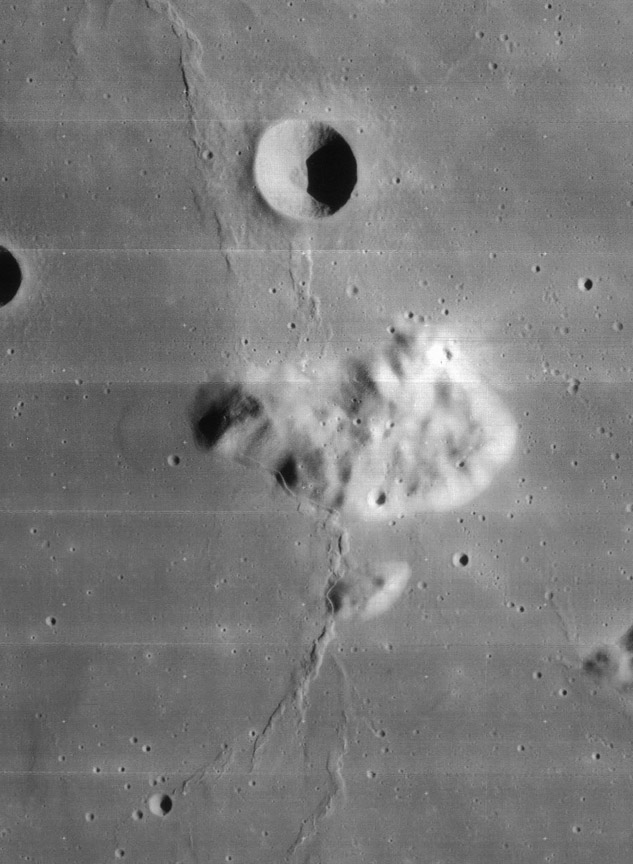
Lunar Orbiter IV 149-H3 image from USGS Lunar Orbiter Digitization Project
Stefan Lammel has taken to mining the high resolution Apollo and Lunar Orbiter images, bringing wonderful and unusual photos to our attention. This closeup Lunar Orbiter IV image shows the peak Teneriffe Epsilon (ε) and below it the small hill Teneriffe Omega (ω), with the crater Plato D at top. What is remarkable is the ridge or collar that encroaches slightly up the left flanks of these two mountains. It is hard to image what this might be, but it has been suggested to be a bathtub ring-like mark from where mare lava got sloshed up on the peaks. But that is probably not the right answer. Notice that the collar is continuous with the small mare ridge that continues both north and south of the peaks. The collar is the manifestation of the mare ridge on the peaks. It is evidence like this that supports the most commonly accepted theory for the origin of mare ridges. Ridges are very low angle faults that form where one thickness of the mare material fractures and slides up and over the adjacent mare rocks. The most famous example of a mare layer being trust up an adjacent mount occurs near the Apollo 17 landing site. Many (most?) mare ridges are low angle faults.
Technical Details:
Do you wonder where the peak letter designations come from? The last official version of Greek letter elevations is the System of Lunar Craters catalog that I coauthored in the mid-60s. Sky & Telescope still publishes our quadrant maps which contain this topographic nomenclature.
Related Links:
Rükl chart 3
Yesterday's LPOD: Snakey Map
Tomorrow's LPOD: Unknown Klaproth
COMMENTS?
Register, Log in, and join in the comments.



